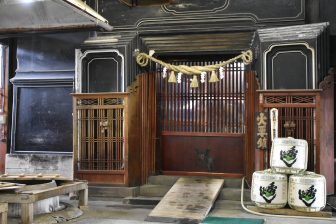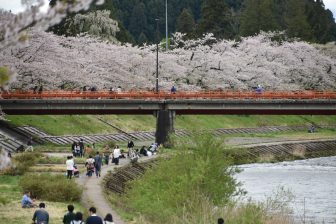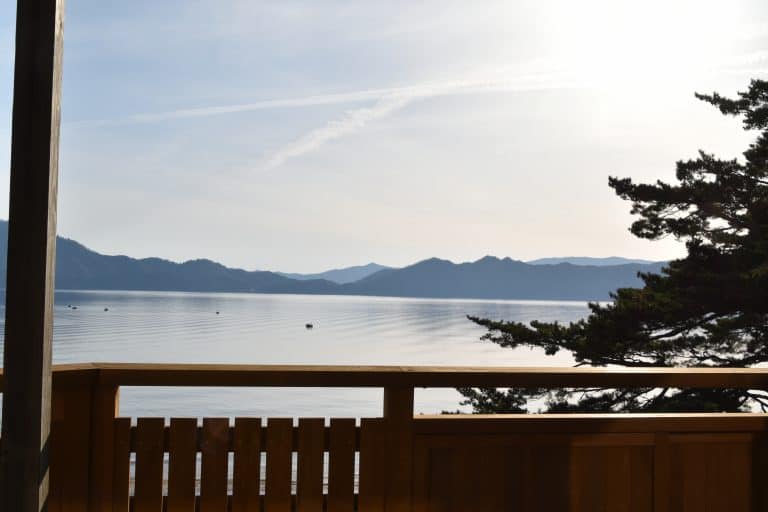
[ Apr.2019 ] We stayed in a Ryokan, a Japanese style hotel, called “Katakuri no Hana (Asian fawnlily flowers) on the lakeside of Lake Tazawa in Akita prefecture, Japan.
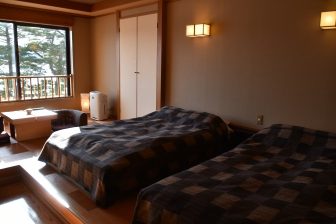
The exterior was not special, but the inside was nice.
Our room was a mixture of the Western style and Japanese style with beds, but the problem was that there were many different levels in the room.
We had to be careful, especially during the night when we needed to go to toilet.
Within our room, there was a toilet but no shower.
Luckily, the private open air bath was close to our room, so we used it in the evening and in the morning.
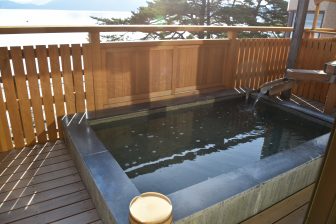
Here, we could use this private bath anytime without any extra charge, as long as no one else was using it, which was very convenient.
We could see the Lake Tazawa from our room, as well as from the bath.
The dinner was served in the restaurant at 6 pm.
Every dish was nice and elaborate and the quantity was generous, too, so it was very satisfactory.
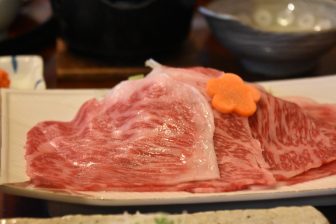
The highlights were Shabu Shabu of Wagyu (a hotpot dish featuring thinly sliced beef with vegetables) and the local speciality, Kiritanpo (another hotpot dish with Japanese rice).
My husband and I had a few selections of Japanese sake and one of our family members enjoyed the local beer.
The meals at Ryokans and hot spring baths are the best experiences in Japan, aren’t they?
The breakfast the next morning was very good, too.
The simple white rice was so good that I ate too much.

By the way, the shop in this Ryokan was peculiar.
At the end of the room, they were exhibiting old radios.
The local collector took more than 30 years to collect these 500 radios, apparently.
They were all made and sold between 1955 and 1985.
They looked familiar but, in fact, they were already relics from the past, which you don’t see nowadays, which made me think about the passage of the time.
On top of that, they were selling semi-precious stones, such as agate, in the same room.
The person in the Ryokan explained “Because they buy them from the place of origin and sell them here directly, they are cheap” and they were really cheap.
I bought one heart shaped agate with lovely colours for my memory.
I am planning to make it into a pendant.
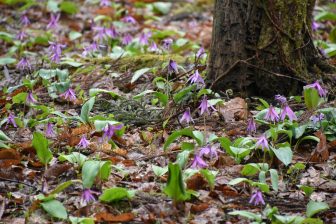
Because the name of this Ryokan is Katakuri Flowers (Asian Fawnlily), there was a photo of the field of flowers there.
The photo showed the ground full of purplish pink flowers, which were really bright and beautiful, so we changed our plan and decided to see the Katakuri Gunsei no Sato (Fawnlillies Cluster Village) instead of seeing skunk cabbage field.
For me, Katakuri reminded me only of starch powder, which is Katakuri-ko in Japanese and I did not know it was the name of a plant.
I learned that Katakuri-ko used to be made from starch from Katakuri flowers.
Because the amount of the starch from Katakuri is so little, nowadays they make Katakuri-ko from starch from potatoes and others.
The flowers of Katakuri bloom between mid-April and early May and we were just in the middle of the season, so our expectation was high.

Unfortunately, it was raining on the day.
Within our family, there are two powerful rain queens, so we often have bad weather during our family holiday.
The size of this cluster is apparently the largest in Japan, but when we arrived we found that their best has already passed this year.
Apparently, Katakuri flowers look up when the sun is shining, but otherwise they keep looking down.
They were all looking down on this rainy day.
Even so, we could enjoy these lovely flowers a little.

